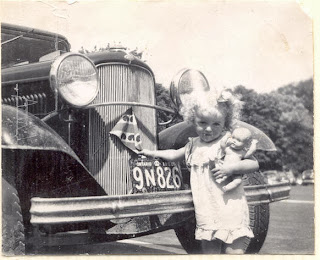To whit: she needs to stop at every fiber-related shop, studio, gallery and supply place she sees. This includes a LOT of places here, because it seems like every other shop is related to the arts. What’s an old guy to do? It’s enough to drive one to drink. Fortunately, just down the street from one of our
stops, Suttles and Seawinds, there’s a liquor store. So while the new woman browses through this iconic quilt studio, he’s sent off to buy a bottle of wine, then finds himself a bench to wait.
Now, it appears that a guy waiting on a bench outside a quilt store is not an uncommon sight. Al is joined by a fellow from Michigan whose women saw the sign and just had to stop “for a minute.” The men begin to chat, sharing stories, and it turns out after this stop, the Michiganders are headed for Shelburne, where there’s a whirligig festival. Al’s ears perk up. Whirligigs are made of wood, and that’s his thing. When I come out of the shop, I find that our plans have changed. See what happens when you leave an old guy alone for a minute? No more quilt shops today: we’re headed 2 hours down the road to check out the whirligigs.
 And so it goes. Nova Scotians are a creative lot, and we’ve
And so it goes. Nova Scotians are a creative lot, and we’veadmired their paintings, sculptures, folk art, quilts, woodwork, pottery, jewellery, hooked rugs and more. We’ve even bought a few things. Which has got me thinking: why is it that I feel a compulsion to check out these fibre-related venues, and why are we drawn to these galleries and exhibits? Are we just in search of souvenirs to take home? I think there’s more to it than that.
Rags to Riches: Words and Works by Laurie Swim, a book I picked up in Swim’s Lunenburg quilt gallery, gives a clue. In the introduction, artist Mary Pratt reflects on the way “it used to be”: people sewed, hooked rugs, worked with wood, metal and clay to make the necessities of life. Now, we have easy access to just about everything we could want or need in mass quantities: blankets made in China, tools sold at Canadian Tire, factory-produced mufflers for our cars and bowls to serve our dinners. And yet we long for whirligigs and thingamajigs, for hand-turned bowls and hand-shaped teapots and hand-stitched fibre art.
Pratt continues, “How right, that now, when the actual requirement for handmade items no longer exists, creativity and the desire to add some truth of beauty still remain.” That phrase “the truth of beauty” seems so right. When we visit galleries or whirligig festivals, somehow, mysteriously, we catch glimpses of the true nature of things – the stretching for something more, the way things could be. Maritime artist Deanne Fitzpatrick, who hooks gorgeous rugs, writes, “Art is about transformation. For me, it is about seeing the ordinary and finding the beautiful ... I believe there is meaning in beauty, and that in life we seek beauty as much as anything.”
Aha! So that explains my feeling of awe when I walked into Gaspereau Valley Fibres. The farm wool shop features rough-hewn beams, wooden floors, and is awash in colour and texture. It is pure beauty packed into bins and packages, hanging from the ceilings and spilling out to the floor. My senses are saturated with dreams of what I could do with all those fibres, once I get them home.
I bought some, of course, a hank of roughly-spun nubby fibres, so fresh off the sheep’s back it still has bits of hay stuck in it, but dyed in multiple hues of earthy blues, browns and purples. All in the pursuit of beauty, naturally. And that’s the truth!
Some more of the beauty we saw. Thanks, Nova Scotia artists, for sharing your visions of beauty.
 |
| Windy and wild at Shelburne's Whirlygig Festival |
 | ||||
| Stained glass window: Tree of Seasons |












